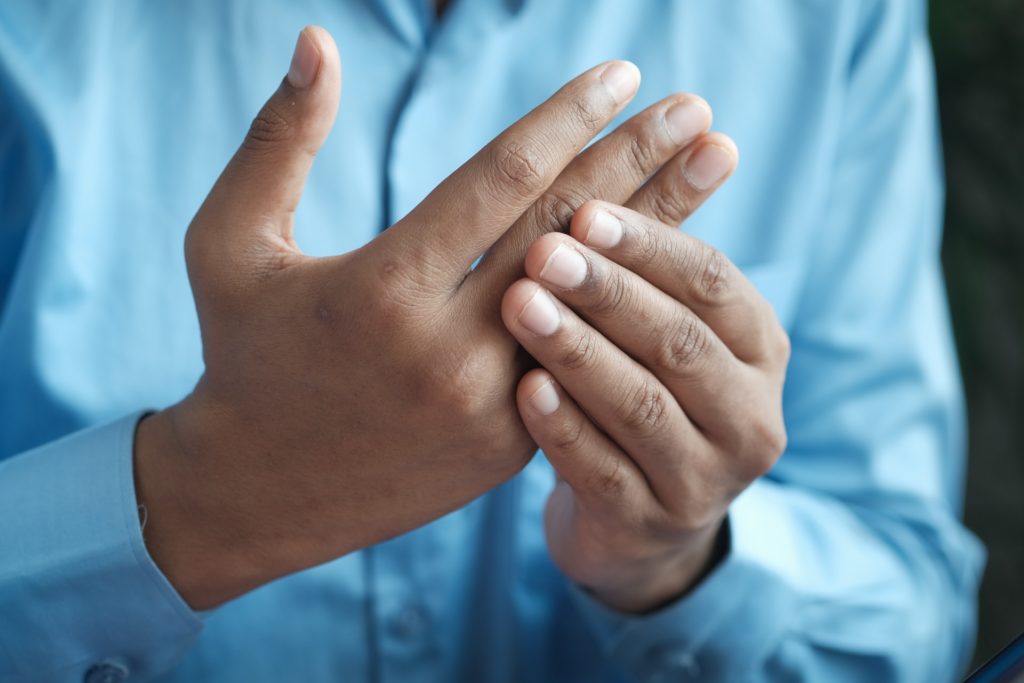Understanding Joint Pain and Its Causes
Living with joint pain from conditions like rheumatoid arthritis (RA), osteoarthritis, or fibromyalgia can be physically and emotionally challenging, making even everyday activities difficult. Joint pain can also result from muscle imbalances, where tightness in one muscle group creates tension around a joint. For example, tight quadriceps can cause knee pain by putting excess strain on the patellar tendon, while imbalances between the biceps and triceps can affect elbow health. Whether the discomfort originates from a condition or muscle imbalance, finding relief from joint pain is crucial for quality of life.
While medications may provide short-term relief, they often come with side effects. Massage therapy, on the other hand, offers a holistic, non-invasive approach to managing joint pain and promoting overall joint health. This article explores how massage therapy can help relieve joint pain, increase flexibility, and improve your overall well-being.”
How Massage Therapy Helps Alleviate Joint Pain
Massage therapy offers relief to joints and surrounding muscles by improving circulation, reducing inflammation, and enhancing flexibility. Here’s how it works:
- Increases Circulation and Reduces Swelling: Massage encourages blood flow to the affected areas, supplying essential nutrients and oxygen while reducing swelling.
- Relieves Pain and Tension: Targeted massage techniques can help manage pain by alleviating muscle tension around the joints.
- Enhances Joint Flexibility and Mobility: By working on surrounding muscles and tendons, massage therapy can improve range of motion and ease joint stiffness, allowing for greater flexibility.
These benefits make massage therapy an excellent option for people seeking relief from joint pain while addressing the root causes of their discomfort.
The Best Massage Therapy Techniques for Joint Pain
Your ideal massage therapy routine depends on the cause of your joint pain and your body’s specific needs. Here are some effective techniques for managing joint discomfort:
- Swedish Massage: This gentle, relaxation-focused massage style can be beneficial for people with osteoarthritis, especially in the knees. Regular weekly sessions may help reduce stiffness and pain while enhancing flexibility. To learn more about the benefits of Swedish massage, check out our article What Are the Benefits of Swedish Massage?
- Trigger Point Therapy (Neuromuscular Therapy): For those experiencing hip or shoulder pain due to muscle knots, trigger point therapy offers targeted relief. This technique involves applying varying pressure to tight muscles for short intervals to relieve pain and restore movement.
- Myofascial Release: For people with joint pain related to tension in the fascia (the connective tissue covering muscles), myofascial release can ease discomfort and improve joint mobility by releasing restrictions in these tissues.
Note: If you have rheumatoid arthritis (RA), avoid massage therapy on affected joints during flare-ups, as these areas can be overly sensitive to pressure. Always consult your healthcare provider before starting massage therapy.
Common Concerns: Can Massage Make Inflammation Worse?
A common question people have is whether massage therapy might worsen inflammation, as some report feeling sore after a session. This post-massage soreness is part of the body’s healing response. During the session, blood flow and nutrients are directed to the muscles, triggering the body’s repair processes, which may cause mild, temporary soreness.
To reduce post-massage soreness, try these tips:
- Hydrate: Drink plenty of water before and after your session to flush out toxins and reduce soreness.
- Avoid Sugar, Alcohol, and Caffeine: These can contribute to inflammation and prolong soreness.
- Apply Essential Oils: Peppermint, marjoram, and lavender oils can provide relief when applied topically with a carrier oil like olive or coconut oil.
- Use Ice Packs: If you experience any soreness, apply an ice pack for 15-minute intervals to help reduce inflammation.
This soreness should subside within 36 hours, leaving you with the lasting benefits of increased mobility and reduced pain.
Building a Holistic Approach to Joint Health at Pledge To Fitness®
Massage therapy is just one component of a holistic joint health plan. At Pledge To Fitness®, we incorporate a range of techniques to help you manage joint pain and improve your overall health, including:
- Customized Exercise Programs: Strengthening the muscles around your joints can significantly reduce joint stress, providing stability and protection. Our trainers design customized exercises to support joint health by building strength, improving flexibility, and enhancing endurance.
- Nutritional Support: Proper nutrition is essential for joint health. Nutrients such as omega-3 fatty acids, antioxidants, and vitamins C and D are crucial for reducing inflammation and supporting joint repair. Our nutrition coaches work with you to develop a diet that promotes joint health and overall wellness.
- Massage Therapy: Our expert therapists tailor sessions to target your specific joint pain issues, using techniques that alleviate discomfort, improve range of motion, and support muscle balance.
Transforming Joint Health for Long-Term Wellness
At Pledge To Fitness®, we believe that long-term success in managing joint pain requires a multi-faceted approach. By combining massage therapy, personalized exercise, and nutritional guidance, we empower you to achieve lasting relief from joint pain and improve your quality of life. With this comprehensive care, your body’s natural healing abilities are maximized, helping you regain mobility and confidence in daily activities.
Ready to Begin? Book a consultation at Pledge To Fitness® and take the first step toward a pain-free life with our holistic approach to joint health. Let us help you find relief from joint pain and support your journey to wellness!



